Boston Children's Museum
308 Congress Street, Boston, MA 02210
617-426-6500
© Boston Children’s Museum 2025
Website Design by Jackrabbit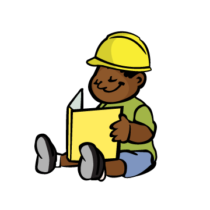
Providing a context to an activity can help to give it significantly more meaning for children. Before doing the Mekena engineering activity, read this story to children and learn about a real Mekena builder from Ethiopia.
VIEW ACTIVITY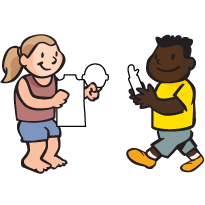
Communities from all over the world use folktales to convey cultural beliefs and practices. In parts of Liberia, elders tell folktales to children in the palaver hut, a place the community also uses for conflict resolution.
VIEW ACTIVITY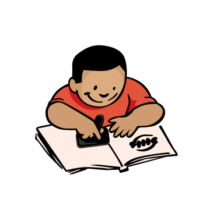
Adinkra are unique symbols created in West Africa, especially in Ghana. They are often used on pottery, woodcarvings, in logos, and they are especially beautiful when stamped on fabric. The Ashanti people of Ghana originally created Adinkra cloth to wear on special occasions, like funerals and weddings, and to important religious ceremonies. Adinkra stamps are symbols that represent specific feelings, events, things, or places.
VIEW ACTIVITY
Providing a context to an activity can help to give it significantly more meaning for children. In tandem with the Adinkra and Adinkra Stamps activities, read this story to children and learn a little more about the significance of these beautiful Adinkra symbols.
VIEW ACTIVITY
Adinkra are unique symbols created in West Africa, especially in Ghana. They are often used on pottery, woodcarvings, in logos, and they are especially beautiful when stamped on fabric. The Ashanti people of Ghana originally created Adinkra cloth to wear on special occasions, like funerals and weddings, and to important religious ceremonies. Adinkra stamps are symbols that represent specific feelings, events, things, or places. See some examples of Adinkra symbols and what they mean in the Adinkra Glossary (Click here for the PDF).
VIEW ACTIVITY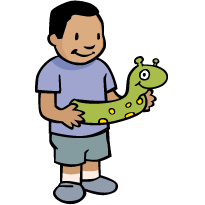
Focusing on characteristics of living things (food, shelter/protection, methods of gathering food, etc), this activity gives kids a chance to construct a 3-D model of the living things that they invented in the “Design a Critter” activity. Students will have an opportunity to practice observation and problem solving skills as well as tool use and materials manipulation. And, they get to be creative!
VIEW ACTIVITY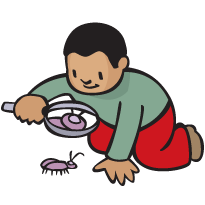
No matter where you are, a surprising array of living things occupies the same space. In the city, in the country, in the suburbs—many species of insect, arachnid, worm and other organisms can be found if you take the time to look. Giving children the opportunity to do an inventory of these creatures not only familiarizes them with living things and classification, but instills in them a sense of place and an understanding of and an appreciation for their home environment.
VIEW ACTIVITY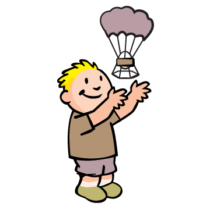
Engineering activities give kids a chance to develop problem solving and observations skills, to work with interesting and engaging tools and materials, and to learn how to work as a member of a team. In this activity, your students will get to do all of that as they are challenged to protect an egg from breaking after it is dropped from a set height. This activity is part of the Incredible Egg series of activities, which are designed to be done during the Spring.
VIEW ACTIVITY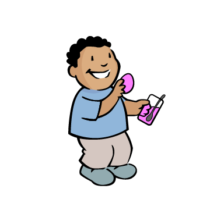
Spring is a time of rebirth and renewal—and eggs! Many animals lay and incubate eggs in the spring, and in some cultures spring is a time in which kids paint, hide and eat lots of eggs. This makes it a great time to not only take a close look at eggs, but also to experiment with some of the things we can do with them. This activity is part of the Incredible Egg series of activities, which are designed to be done during the Spring—start your students off with some of the “egg science” activities, then move on to “egg art”, and finally take the Egg Drop Challenge!
VIEW ACTIVITY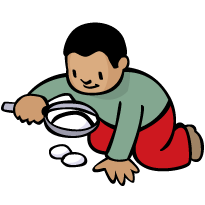
Mosaics are traditionally created using small pieces of material like glass, stone, etc. to make colorful, often intricate patterns. In this activity, colored and white eggshells are used to produce a similar effect. Spring is a time of rebirth and renewal—and eggs! Many animals lay and incubate eggs in the spring, and in some cultures spring is a time in which kids paint, hide and eat lots of eggs. This makes it a great time to not only take a close look at eggs, but also to experiment with some of the things we can do with them. This activity is part of the Incredible Egg series of activities, which are designed to be done during the Spring—start your students off with some of the “egg science” activities, then move on to egg art, and finally take the Egg Drop Challenge!
VIEW ACTIVITY